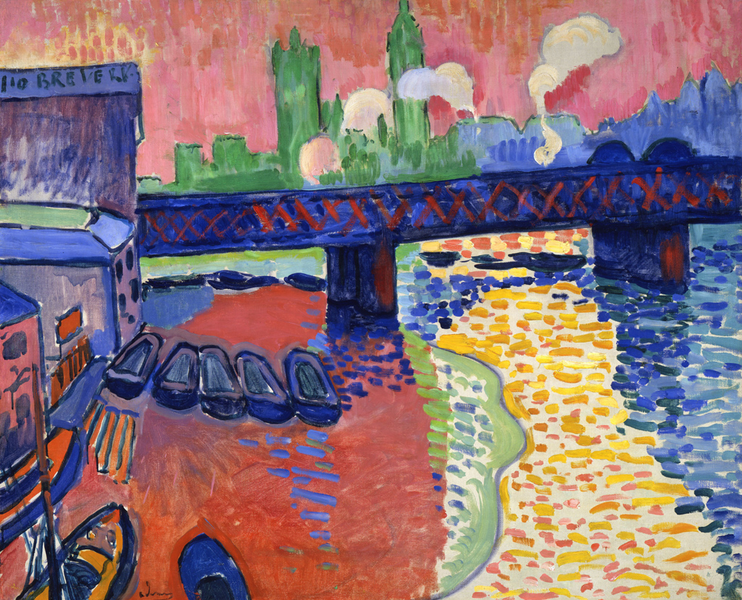28 Mart 2012 Çarşamba
LES FAUVES
Fauvism is the style of les Fauves (French for "the wild beasts"), a short-lived and loose group of early twentieth-century Modern artists whose works emphasized painterly qualities and strong colour over the representational or realistic values retained by Impressionism. While Fauvism as a style began around 1900 and continued beyond 1910, the movement as such lasted only a few years, 1904–1908, and had three exhibitions. The leaders of the movement were Henri Matisse and André Derain.
Henri Matisse, Portrait of Madame Matisse (The Green Stripe), 1905, Statens Museum for Kunst, Copenhagen, Denmark
The Fauves remained a disparate group of artists. Their identity as a group only grew over time, and almost as soon as it was recognized, they sundered. Neither did they produce a manifesto defining their artistic aims, although Matisse's "Notes of a painter", written in 1908, echoes many of their concerns.
What united them was their explicit focus on the use of color as a means of emotive expression. André Derain once said, "I used color as a means of expressing my emotion and not as a transcription of nature." Likewise, Matisse once said, "There is nothing more difficult for a truly creative painter than to paint a rose because before he can do so he has first to forget all the roses that were ever painted." Together these quotes comprise the basic tenets of Fauvism.
The Fauves' preoccupation with surface effects, color, and personal expression, meant that they were less concerned with the individuality of their subject matter. The Impressionists and Post-Impressionists had concerned themselves with locating and depicting scenes of modern life, such as the cafes and alleyways of Paris, and the Expressionists would do likewise in the years to follow, painting street scenes in Berlin and portraits of prostitutes and other social outcasts. The Fauves, much like van Gogh and Cézanne, wanted to paint what they saw and turn that act of painting into an emotional and often spontaneous journey; each journey was defined by the colors and evident brush motions on the canvas.
André Derain, Charing Cross Bridge, London, 1906, National Gallery of Art, Washington, DC.
Albert Marquet
Charles Camoin
Louis Valtat
Henri Evenepoel
Maurice Marinot
Jean Puy
Maurice de Vlaminck
Henri Manguin
Raoul Dufy
Othon Friesz
Georges Rouault
Fauvism Notes
Fauvism was a style of painting developed in France at the beginning of the 20th century by Henri Matisse and André Derain.
The artists who painted in this style were known as 'Les Fauves'.
The title 'Les Fauves' (the wild beasts) came from a sarcastic remark by the art critic Louis Vauxcelles.
Les Fauves believed that colour should be used to express the artist's feelings about a subject, rather than simply to describe what it looks like.
Fauvist paintings have two main characteristics: simplified drawing and exaggerated colour.
Les Fauves were a great influence on the German Expressionists.
http://www.artyfactory.com/art_appreciation/art_movements/fauvism.htm
http://www.theartstory.org/movement-fauvism.htm
http://en.wikipedia.org/wiki/Fauvism
Kaydol:
Kayıt Yorumları (Atom)


Hiç yorum yok:
Yorum Gönder